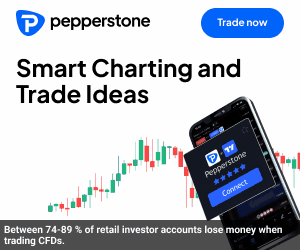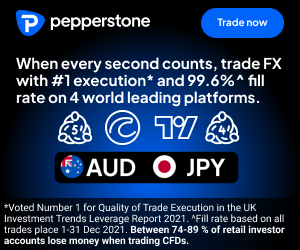Introduction
Welcome to Norztrading, your guide to exploring the world of CFD trading. In this article, we will delve into the exciting realm of FRONTLINE stocks and how you can capitalize on their potential using Contracts for Difference (CFDs). FRONTLINE is a renowned player in the shipping industry, and its stocks offer a compelling investment opportunity. By trading FRONTLINE stocks with CFDs, you gain access to a wide range of advantages, including leverage, flexibility, and the ability to profit from both rising and falling markets. Join us as we embark on a journey through the history of FRONTLINE, the benefits of CFD trading, and the potential pros and cons of trading FRONTLINE stocks.
Pros of Buying and Trading FRONTLINE Stocks
- Exposure to a Leading Shipping Company: Investing in FRONTLINE stocks allows you to become a part-owner of a prominent player in the shipping industry. By buying FRONTLINE stocks, you benefit from the company’s growth potential and industry expertise.
- Leveraging Market Opportunities with CFDs: CFDs enable you to leverage your investment and control larger positions with a smaller upfront capital requirement. With FRONTLINE stocks, you can amplify your potential profits by trading on margin.
- Flexibility to Profit in Any Market Direction: Whether FRONTLINE stock prices are rising or falling, CFD trading allows you to take advantage of price movements. You have the freedom to go long (buy) or short (sell) FRONTLINE stocks, depending on your market analysis.
- Diversification of Your Investment Portfolio: Adding FRONTLINE stocks to your investment portfolio provides diversification benefits. By including stocks from different sectors, such as shipping, you can reduce the risk associated with relying on a single industry.
- Access to Global Shipping Market: FRONTLINE operates globally, participating in the vibrant international shipping market. By trading FRONTLINE stocks, you gain exposure to the opportunities and potential rewards offered by this dynamic industry.
Cons of Buying and Trading FRONTLINE Stocks
- Volatility in the Shipping Industry: The shipping industry is susceptible to various external factors such as geopolitical events, economic fluctuations, and regulatory changes. These factors can introduce volatility to FRONTLINE stock prices, potentially impacting your investment.
- Market Risks and Uncertainties: As with any investment, there are inherent risks involved when trading FRONTLINE stocks. Factors such as supply and demand imbalances, changing fuel costs, or disruptions in global trade can affect the performance of FRONTLINE stocks.
Example: Leveraged CFD Trade with FRONTLINE Stocks
Let’s consider a hypothetical scenario where you decide to trade FRONTLINE stocks using CFDs. You believe that FRONTLINE’s recent expansion plans and the positive outlook for the shipping industry will drive the stock price higher. You decide to take a long position on FRONTLINE stocks using leverage.
- Leveraged Buy Position: You enter a leveraged CFD trade, purchasing 1,000 FRONTLINE CFDs at a leverage ratio of 1:10. The current market price of FRONTLINE stocks is $10 per share. With leverage, you only need to deposit 10% of the total trade value as margin, which amounts to $1,000 (1,000 shares * $10 per share * 10% margin). The remaining $9,000 is borrowed from your CFD broker.The trade unfolds favorably, and FRONTLINE’s stock price rises to $12 per share. You decide to close your position and take your profits. The profit calculation is based on the difference between the opening and closing prices multiplied by the number of CFDs: Profit = (Closing Price – Opening Price) * Number of CFDs Profit = ($12 – $10) * 1,000 = $2,000In this example, you generated a profit of $2,000, which is a 200% return on your initial margin investment of $1,000.
Example: Leveraged CFD Trade Short Selling FRONTLINE Stock
In another hypothetical scenario, you anticipate a potential downturn in the shipping industry, and you decide to take a short position on FRONTLINE stocks using leverage.
- Leveraged Short Sell Position: You enter a leveraged CFD trade, selling short 1,500 FRONTLINE CFDs at a leverage ratio of 1:10. The current market price of FRONTLINE stocks is $15 per share. Again, with leverage, you only need to deposit 10% of the total trade value as margin, which amounts to $2,250 (1,500 shares * $15 per share * 10% margin). The remaining $12,750 is borrowed from your CFD broker.Your market analysis proves accurate, and FRONTLINE’s stock price declines to $12 per share. You decide to close your position and secure your profits. The profit calculation remains the same as before: Profit = (Opening Price – Closing Price) * Number of CFDs Profit = ($15 – $12) * 1,500 = $4,500In this example, you generated a profit of $4,500, which is a 200% return on your initial margin investment of $2,250.
FAQs Related to Using CFDs for Trading FRONTLINE Stock
Q1. What is a CFD? A1. A Contract for Difference (CFD) is a financial derivative that enables traders to speculate on the price movements of FRONTLINE stocks without owning the underlying asset. CFDs allow you to profit from both rising and falling markets by taking long or short positions.
Q2. How does leverage work in CFD trading? A2. Leverage in CFD trading allows you to control a larger position with a smaller amount of capital. For example, with a leverage ratio of 1:10, you can trade $10,000 worth of FRONTLINE stocks with a margin requirement of only $1,000.
Q3. What are the advantages of trading FRONTLINE stocks using CFDs? A3. Trading FRONTLINE stocks with CFDs offers advantages such as leverage, the ability to profit from price movements in both directions, flexibility, easy access
Q4. What risks should I be aware of when trading FRONTLINE stocks using CFDs? A4. Trading FRONTLINE stocks with CFDs involves risks such as market volatility, leverage amplifying both gains and losses, overnight financing charges, and the potential for margin calls. It is essential to have a thorough understanding of these risks and employ risk management strategies, including setting stop-loss orders and managing your leverage levels.
Q5. How can I choose a reliable CFD broker for trading FRONTLINE stocks? A5. When selecting a CFD broker for trading FRONTLINE stocks, consider factors such as regulation and licensing, reputation, trading platform features, customer support, available trading tools, competitive spreads and fees, and the range of FRONTLINE stock CFDs offered. Research and compare different brokers to find one that aligns with your trading needs and provides a secure and transparent trading environment.
Q6. Are there any specific factors that can impact the price of FRONTLINE stocks when trading with CFDs? A6. Yes, several factors can influence the price of FRONTLINE stocks, including company earnings reports, industry trends, global economic conditions, changes in oil prices (as FRONTLINE is involved in the shipping of oil), geopolitical events, and regulatory changes. Staying informed about these factors through fundamental analysis can help you make more informed trading decisions.
Conclusion
Trading FRONTLINE stocks using CFDs opens a world of possibilities for investors seeking to profit from the shipping industry’s potential. With leverage, flexibility, and the ability to navigate both bullish and bearish markets, CFDs provide a powerful tool for traders. By understanding the pros and cons of trading FRONTLINE stocks, you can make informed decisions and optimize your investment strategy. Embrace the opportunities presented by FRONTLINE stocks and embark on an exciting trading journey with CFDs.
Remember to conduct thorough research, manage your risks effectively, and choose a reliable CFD broker to embark on your trading adventure. Get ready to set sail with FRONTLINE stocks and unlock the potential for financial success.
For more information on trading the Frontline stock, and Frontline in general, please have a look at the official Frontline webpage. For more information regarding our most recommended CFD-broker, -the price winning Scandinavian CFD-brokerage Skilling, -please check out our full Skilling Review.




